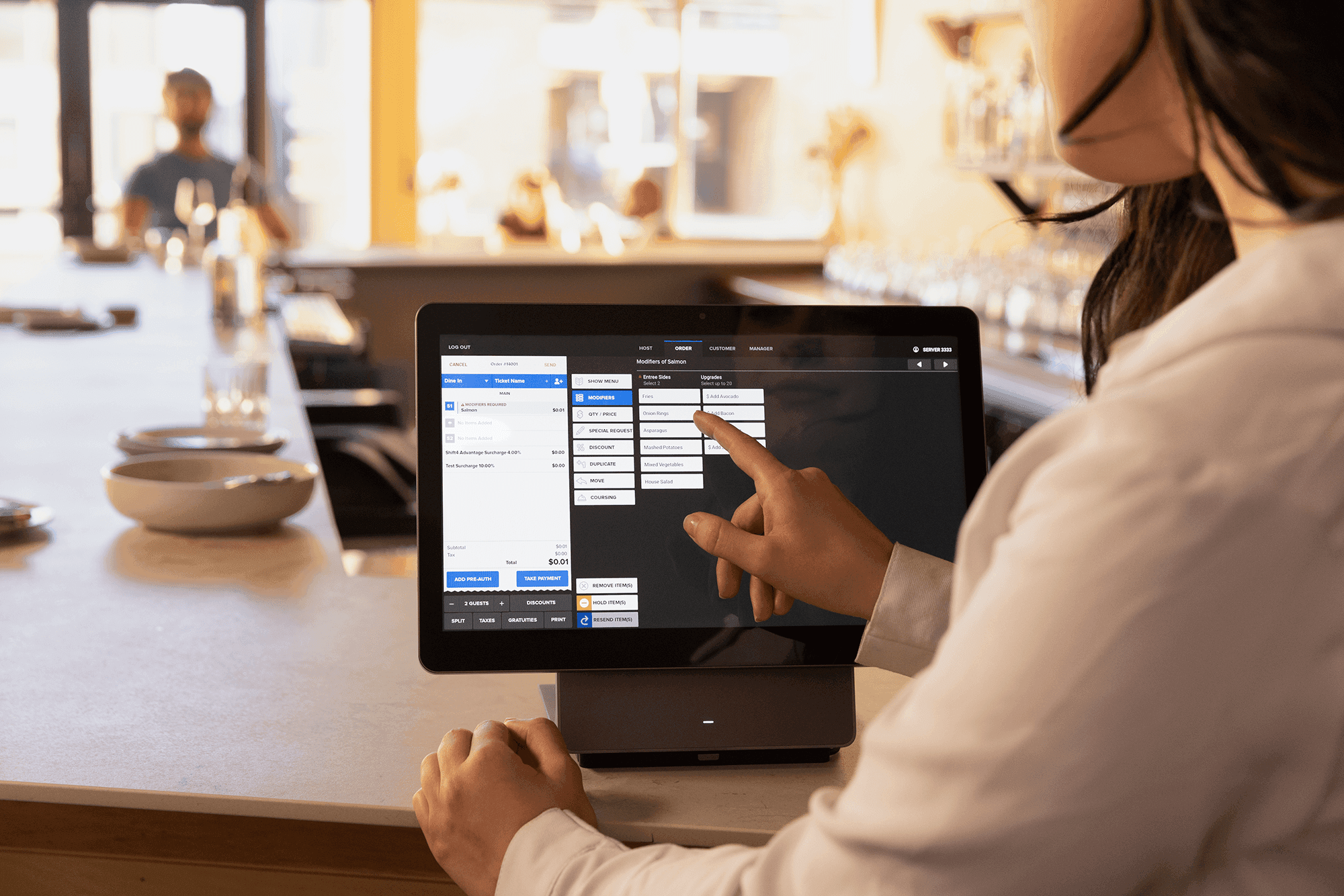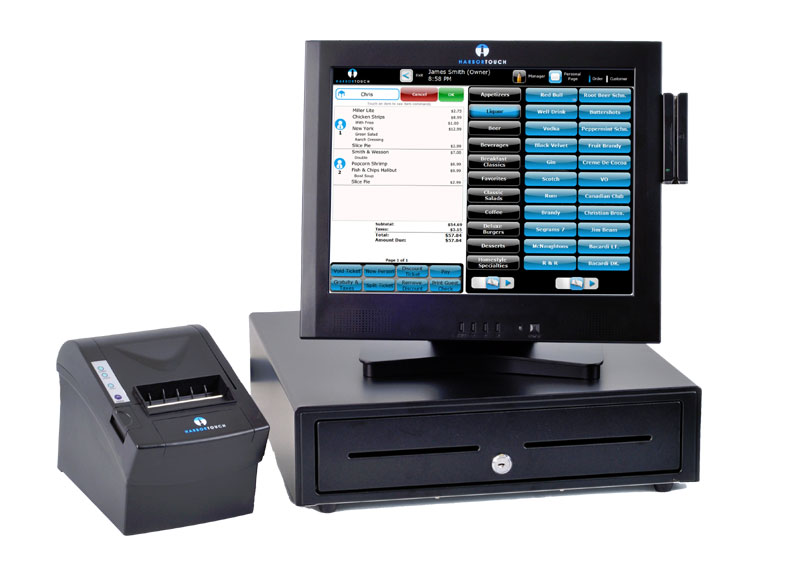Customizable Restaurant POS Software solutions that fit your restaurant’s style and scale
Just How POS System Functions: A Comprehensive Overview for Company Owners
A POS system acts as a necessary tool for modern services, integrating various parts to simplify operations. It includes hardware like barcode scanners and software application up for sale monitoring. This system not just refines transactions however also handles stock and evaluates customer habits. Recognizing its capability can considerably impact a service's efficiency and decision-making. What are the crucial elements that add to this effectiveness? Checking out these components provides useful insights.
Understanding the Components of a POS System
A Point of Sale (POS) system is composed of a number of crucial elements that interact to assist in transactions and take care of business operations. At its core, the hardware consists of devices such as a cash register, barcode scanner, receipt printer, and payment terminal, all essential for processing sales (Restaurant POS Software). The software part handles inventory, sales tracking, and client data, supplying beneficial understandings for service decisions.Additionally, data sources keep transaction documents and consumer information, making certain data integrity and safety. Network connection makes it possible for real-time updates and access to cloud-based solutions, improving functional efficiency. User user interfaces, created for convenience of usage, permit personnel to navigate the system quickly, reducing training time. With each other, these parts create a natural system that improves the sales process, boosts customer service, and help in efficient monitoring of organization resources. Recognizing these components is crucial for local business owner seeking to maximize their POS systems
Just How Sales Deals Are Processed
When a customer determines to make a purchase, the sales purchase launches a collection of organized steps within the POS system. Initially, the cashier inputs the things being acquired, which are checked via a barcode reader or manually gone into. This activity obtains item information, including rates and relevant tax obligations, from the system's database.Next, the client is offered with the overall amount due. The POS system then processes the repayment, whether via money, credit history card, or mobile settlement techniques. For electronic settlements, the POS securely connects with repayment cpus to authorize and confirm the transaction.Once the payment is verified, the system creates a receipt, which can be printed or sent out electronically. This receipt functions as proof of acquisition for the consumer. The purchase data is tape-recorded in the system, guaranteeing precise sales documents and financial monitoring for the service.
Supply Administration and Tracking
Reliable stock management and monitoring are essential components of a POS system, as they ensure that businesses preserve excellent stock degrees and minimize discrepancies. A robust POS system permits real-time inventory updates, mirroring sales and returns instantly. This enables entrepreneur to keep an eye on supply degrees properly, making certain that prominent things are readily offered while avoiding overstocking of less prominent products.Additionally, progressed POS systems offer features such as computerized stock notifies and reorder recommendations, enhancing the purchase procedure. Barcoding and RFID modern technology improve precision in tracking inventory activity, lowering human mistake. Comprehensive coverage tools provide understandings into stock turn over prices, helping organizations make notified choices concerning purchasing and item offerings. Eventually, efficient stock management via a POS system not just enhances operational efficiency yet also boosts client satisfaction by making certain try this out item accessibility.

Analyzing Client Information and Insights
Consumer data analysis serves as an effective tool for companies utilizing a POS system. By gathering and taking a look at transaction data, organizations can discover important insights concerning customer behavior and choices. This analysis enables them to identify purchasing fads, peak purchasing times, and preferred products, thus notifying inventory decisions and marketing strategies.Additionally, businesses can section their client base, enabling customized marketing initiatives that satisfy specific demographics or purchasing behaviors. Comprehending customer loyalty patterns additionally assists in creating targeted promos and rewards programs.The information gleaned from a POS system can likewise disclose understandings right into consumer responses, making it possible for services to make educated choices concerning product offerings and solution renovations. Eventually, leveraging consumer information successfully can boost the general buying experience, foster customer contentment, and drive income growth.
Benefits of Implementing a POS System
Executing a POS system uses many benefits that i loved this can considerably enhance company operations. To start with, it streamlines transaction processes, minimizing delay times and enhancing client complete satisfaction. By automating sales processes, companies can reduce human mistake and warranty precise record-keeping. Additionally, a POS system offers beneficial information analytics, allowing proprietors to track sales trends and supply degrees in real-time. This insight supports notified decision-making, aiding to enhance supply administration and advertising and marketing strategies.Moreover, lots of POS systems incorporate with various other organization devices, such as bookkeeping software application, streamlining economic monitoring. Improved staff member management functions, such as tracking hours and performance, additional add to functional efficiency.Lastly, the implementation of a POS system can lead to boosted earnings with improved customer experiences and critical insights, ultimately cultivating service growth and sustainability.
Often Asked Questions
What Sorts Of Organizations Can Gain From a POS System?

Just how much Does a POS System Generally Price?
The expense of a POS system generally varies click this site from a few hundred to numerous thousand dollars, relying on functions, equipment, and software program - Restaurant POS Software. Services should think about recurring costs for maintenance, support, and purchase processing when budgeting

Can I Incorporate a POS System With Existing Software?
Incorporating a POS system with existing software program is usually possible. Numerous systems supply APIs or integrated compatibility attributes, allowing companies to streamline operations and boost performance by connecting different software program applications properly.
What Training Is Required for Staff to Make Use Of a POS System?
Educating for staff to use a POS system normally consists of understanding software program performances, refining transactions, managing supply, and taking care of consumer interactions - Restaurant POS Software. Practical presentations and hands-on session enhance effectiveness and self-confidence in using the system efficiently
What Occurs if the Net Drops While Utilizing a POS System?
If the web drops throughout POS system use, deals might be disrupted. Lots of systems provide offline abilities, enabling standard procedures to continue, but full performance, including real-time supply updates, will be restricted.